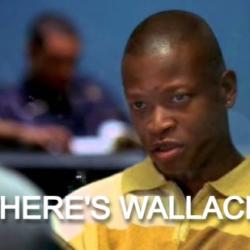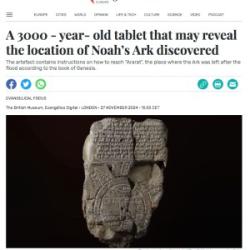Imagine yourself in one of the following hypothetical situations:
* Your boss, who is Catholic, invites you to his daughter's wedding and you've never been to a Catholic wedding before.
* Your new coworker is a Mormon and you don't want to make any Mormon faux pas. You're not even sure if there is such a thing as a Mormon faux pas or what it might be.
* You're headed to the funeral of a friend's father who, you've just learned, was a devout conservative Jew and you have no idea what to expect or what to do.
* You've just moved to Los Angeles from Orange City, Iowa, and you're beginning to suspect that many people in your new home city are not Dutch Reformed.
* Your country's new attorney general is a member of the Assemblies of God, but no one in the media seems able to explain what this means.
(Okay, that last one isn't really hypothetical.)
One place you could turn for some guidance is one of my favorite reference books — How to Be a Perfect Stranger.
Editors Stuart M. Matlins and Arthur J. Magida aren't trying to replace the standard dry reference texts like The Handbook of Denominations. They're after something more practical, as the book's subtitle suggests, "The Essential Religious Etiquette Handbook."
"Etiquette" may sound archaic and, well, mannered — like something out of Jane Austen. It conjures connotations of silly rules about which fork to use for the fish. But when Matlins and Magida talk about etiquette what they're really talking about is respect.
In an increasingly pluralistic society like ours, it's inevitable that we will have to — get to — interact with others from religious traditions that we know little about. M&M provide a useful guide that lets us treat each other with respect.
Perfect Stranger offers an overview not only of the bewildering array of Protestant varieties, but of several other traditions as well.
Here's the list from the table of contents: African-American Methodist Churches, Assemblies of God, Baha'i, Baptist, Buddhist, Christian Church (Disciples of Christ), Christian Science (Church of Christ, Scientist), Churches of Christ, Episcopal and Anglican, Hindu, Islam, Jehovah's Witness, Jewish, Lutheran, Mennonite/Amish, Methodist, Mormon (Church of Jesus Christ of Latter Day Saints), Native American/First Nations, Orthodox Churches, Pentecostal Church of God, Presbyterian, Quaker (Religious Society of Friends), Reformed Church in America/Canada, Roman Catholic, Seventh-day Adventist, Sikh, Unitarian Universalist, United Church of Canada, United Church of Christ.
M&M's four pages of acknowledgements — which reads like a delegates list from the Parliament of World Religions — demonstrates the care they have taken to get it right and to show respect themselves for the traditions they discuss.
Particularly helpful is the book's explanations of services and celebrations for the various traditions. If you've ever attended a wedding, funeral or worship service in a tradition that is strange to you, you'll appreciate how helpful it can be to have some clue how to act, how to dress, what to say or bring or do.
Perfect Stranger is also a valuable reference for the newsroom, where it can help to avoid embarrassing errors (like when our paper ran a headline about "Presbyterian priests"). The book should also be extremely useful for anybody in a "human resources" department.
I do wish the book were more comprehensive. It has no entries on Wicca, Neo paganismor Zoroastrianism, for example. And the sections on Orthodox Christianity and Islam could do more to explain the varieties within those traditions. But I note that my copy is the third revised edition, so I'm hopeful the reference will continue to evolve and grow.
Robust pluralism demands mutual respect, which in turn requires us to learn at least a little bit about what others believe. (The glorious mess of the blogosphere may be better at this kind of respectful inclusiveness than is society as a whole.) "Celebrate diversity" the bumper sticker says. That's well-intentioned advice, but it doesn't tell us how to do that. Perfect Stranger does.












